Top 5 Energy-Saving Myths Debunked (Stop Wasting Money)
Every year, Americans spend billions on energy-saving ideas that don’t work. Popular energy-saving myths like standby modes and thermostat tricks cost households hundreds. This article reveals the truth behind these energy efficiency misconceptions.
It shows how to save money with proven strategies. Find out why outdated advice leads to wasting money on energy. And learn how to stop it now.
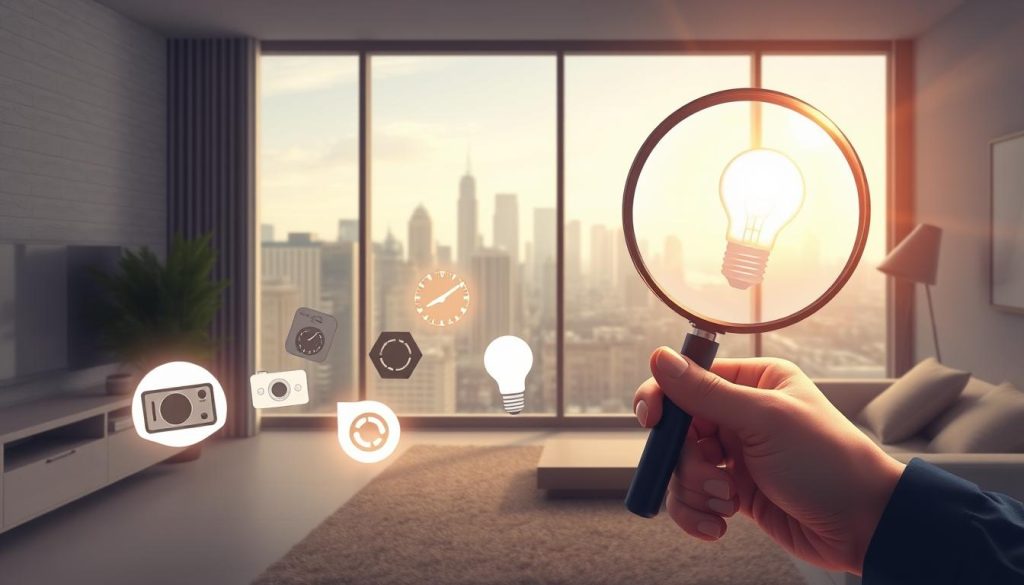
Forget guesswork. We’ll debunk five myths that block your savings, backed by real data. Discover which habits save nothing and which upgrades pay off in the long run. Ready to stop funding myths? Let’s start debunking energy myths and get your money back.
Key Takeaways
- Myths like leaving electronics on standby waste $200+ yearly per household.
- Energy Star certified appliances cut costs over time, not upfront.
- Smart thermostats save 10-15% on heating/cooling when used correctly.
- Most energy waste comes from following unproven advice, not appliances.
- Simple habit changes paired with smart upgrades slash bills without big investments.
Understanding Common Energy-Saving Myths and Their Real Costs
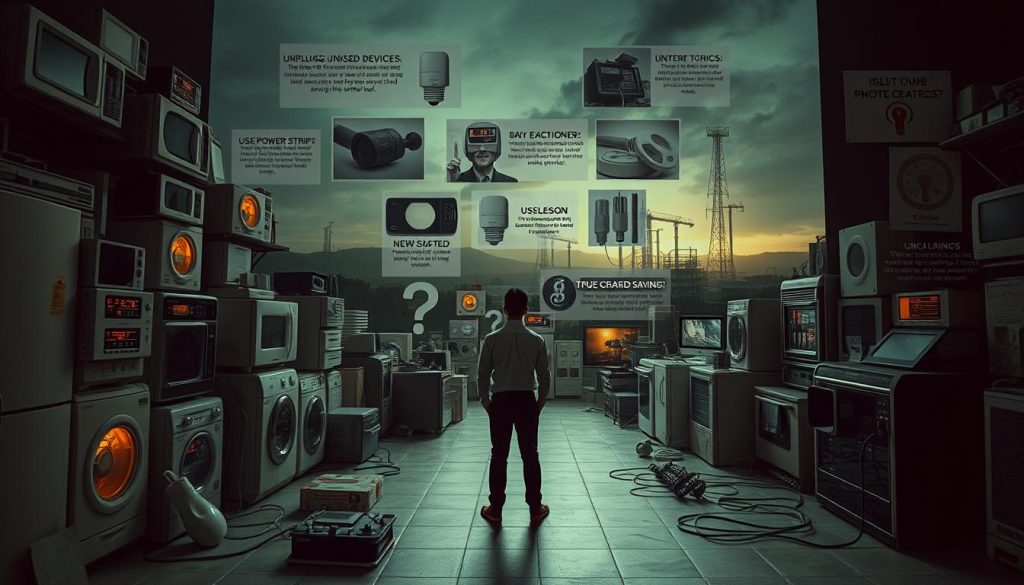
Why Americans Waste Billions on Ineffective Energy Solutions
Every year, over $20 billion is lost due to ineffective energy solutions. The U.S. Department of Energy found that people spend too much on things like “smart” power strips. These devices save less than $5 a year.
A 2023 report from the National Renewable Energy Lab showed that 68% of energy-saving gadgets sold online don’t have third-party proof.
“Consumers often prioritize marketing claims over proven results, leading to avoidable expenses.” – DOE 2023 Energy Consumer Trends Report
- $12 billion spent yearly on unverified gadgets
- 30% of utility bills stem from insulation mistakes
- Only 15% of “energy-saving” apps meet EPA performance standards
The Psychology Behind Energy-Savingign Misconceptions
Confirmation bias plays a big role in energy-saving psychology. People believe myths like “closing windows saves AC costs” even when facts say otherwise. Social media makes these myths spread fast.
People also fear complex solutions and prefer quick fixes. Behavioral economists say that people think visible actions (like unplugging devices) are more important than big changes like fixing ductwork.
| Myth | Psychological Factor |
|---|---|
| Leaving electronics on “saves” electricity | Overconfidence bias |
| Incense sticks purify air | Placebo effect |
How to Identify Legitimate Energy-Savingign Advice
Here’s how to check if advice is real:
- Are there peer-reviewed studies mentioned?
- Does it match energy efficiency facts from Energy Star?
- Does it explain thermodynamic principles?
| Red Flag | Valid Solution |
|---|---|
| “Guaranteed savings” without proof | DOE-certified insulation |
| No mention of kWh metrics | Smart meter data analysis |
Myth #1: Leaving Electronics on Standby Doesn’t Waste Much Energy
Leaving devices in standby mode wastes a lot of energy. This is known as standby power consumption. The average U.S. household loses $100–$200 each year. This is due to phantom energy waste from TVs, cable boxes, and game consoles.
Even devices that seem off, like phone chargers and printers, still use power. This adds to vampire power costs.
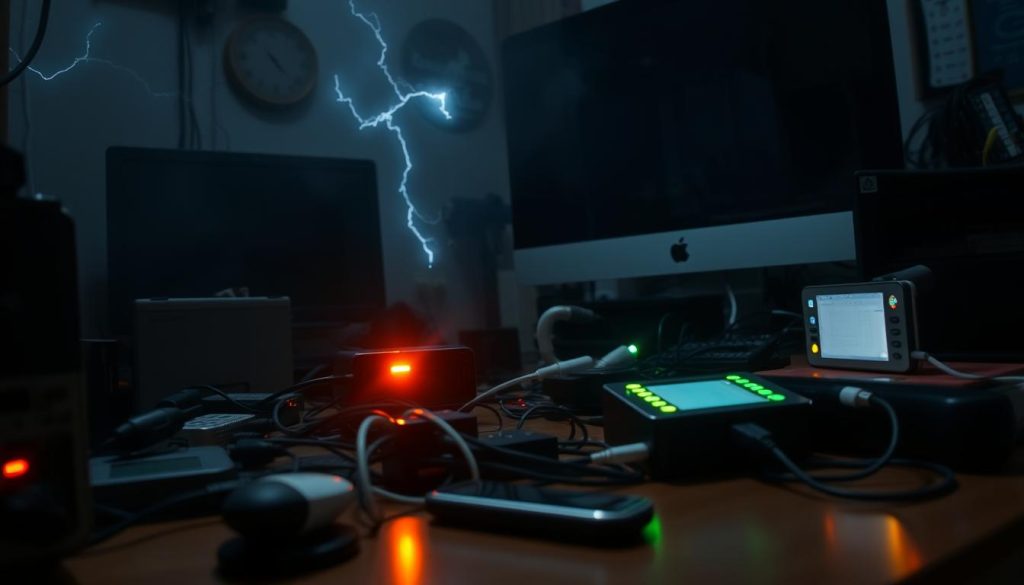
- TVs in standby: 3–10 watts hourly
- Cable boxes: 15+ watts constantly
- Chargers left plugged in: 0.1–0.5 watts
“Idle electronics energy use accounts for 5–10% of residential energy bills,” reports the U.S. Department of Energy. “Older models of routers and set-top boxes are the worst offenders of electronics energy drain.”
To fight this waste, unplug devices you don’t use often. Smart power strips can turn off gadgets automatically. This cuts down on phantom energy waste.
For devices that need to stay on, like modems, use timers. Making these small changes can save money and help the environment by reducing energy use.
Myth #2: Setting Your Thermostat Higher/Lower Heats or Cools Your Home Faster
Many think turning the thermostat up or down makes heating or cooling faster. But, thermostat myths like this just waste energy and money. HVAC systems always run at the same speed. Changing the temperature doesn’t make it heat or cool faster.
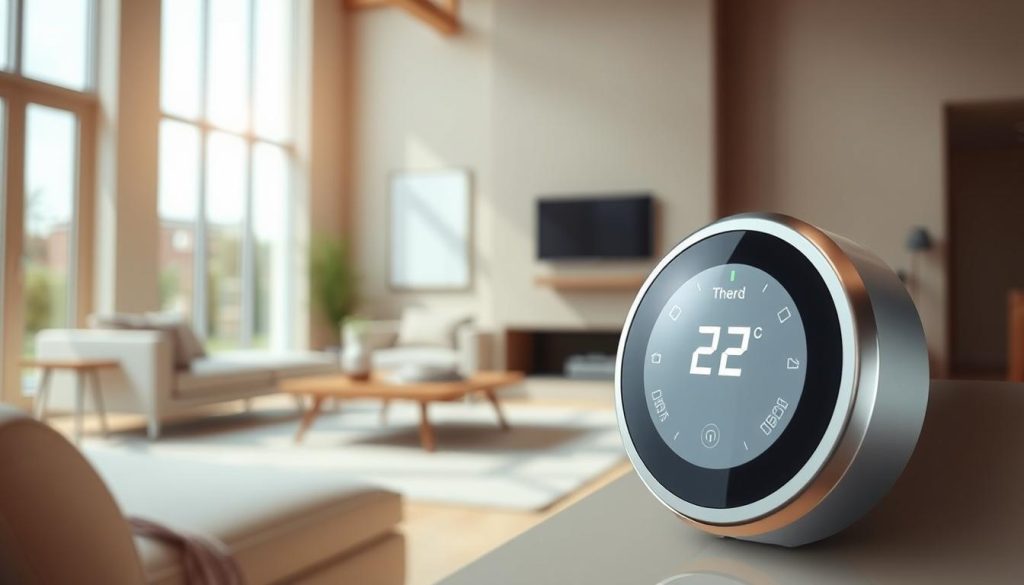
The Truth About Thermostat Efficiency
Your furnace or AC heats or cools at the same rate, no matter the setting. For example, heating a cold room to 72°F takes the same time as 90°F. The only difference is extra time running after reaching the target. HVAC efficiency tips suggest using steady, moderate settings instead of extremes. This helps avoid wasting energy.
Smart Thermostats: Are They Worth the Investment?
Modern smart thermostats can save you money. Models like Nest or Ecobee learn your schedule and adjust the temperature when you’re not home. A 2023 study found that smart thermostat ROI can be 2-3 years, thanks to lower energy bills. Here’s a comparison of some top models:
| Thermostat | Key Features | Estimated ROI |
|---|---|---|
| Nest Learning Thermostat | Self-programming, voice control | 2 years |
| Ecobee SmartThermostat | Room sensors, zoning support | 2.5 years |
Optimal Temperature Settings for Energy Savings
Follow these energy-efficient temperature control tips from the U.S. Department of Energy:
- Summer: 78°F (26°C) or higher
- Winter: 68°F (20°C) or lower
- Adjust by 10-15°F while asleep/away
Even small changes can save 1-3% per degree. These optimal temperature settings help save energy without sacrificing comfort.
Myth #3: Energy-Efficient Appliances Cost Too Much to Be Worth It
Many people think energy-efficient appliances are too expensive. But, the energy-efficient appliance ROI and Energy Star savings show they’re worth it in the long run. Let’s look at the facts.
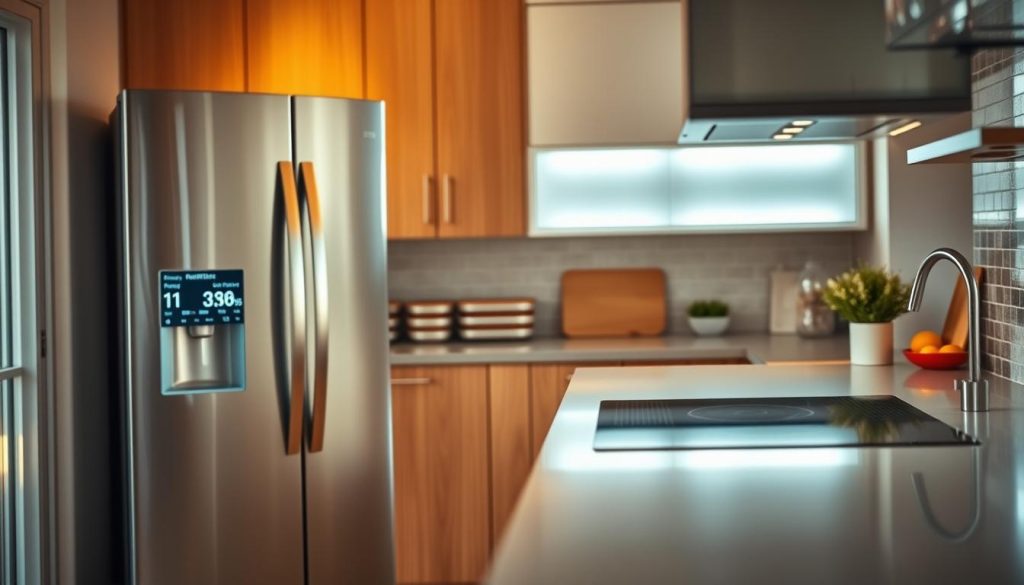
Energy Star Ratings and Long-Term Savings
Energy Star labels mean the appliance is energy-efficient. But, how much you save depends on how often you use it. For example, an Energy Star refrigerator uses 15% less energy than others. Over 15 years, this can save you over $400 in Energy Star savings.
When you add the cost of buying and using the appliance, you see it’s a smart choice.
Payback Periods for Key Appliances
Here’s how quickly you can start saving money:
| Appliance | Initial Cost | Annual Savings | Payback Period |
|---|---|---|---|
| Refrigerator | $1,500 | $120/year | 12.5 years |
| Washer | $800 | $90/year | 8.9 years |
| Dishwasher | $600 | $75/year | 8 years |
These appliance payback periods get shorter with energy efficiency tax credits and rebates from utilities.
Hidden Incentives to Lower Costs
- Federal energy efficiency tax credits can give you up to $200 for certain appliances.
- States like California offer $200 rebates through programs like Cash for Appliances.
- Utilities, like Xcel Energy, give discounts of $100+ for Energy Star appliances.
These cost-effective energy upgrades make energy-efficient appliances more affordable. Start by replacing old, energy-wasting appliances for the quickest savings.
Myth #4: Closing Vents in Unused Rooms Saves Energy
Closing HVAC vents in unused rooms might seem like a good idea. But, it’s actually a common vent closure myth. Modern forced air system optimization needs balanced air pressure in all ducts. Closing vents in one area makes the system work harder, which lowers HVAC system efficiency and raises energy costs by up to 20%, studies show.
When you close vents, it puts pressure on ductwork and motors. This can cause leaks, overheating, and early equipment failure. HVAC experts say not to close vents widely for these reasons. Instead, use zoned climate control systems for better airflow without upsetting the system balance.
“Closing too many vents creates a domino effect of inefficiency,” says the U.S. Department of Energy, noting that partial closure in extreme cases can void manufacturer warranties.
For real savings, try these proven methods:
- Install programmable thermostats to adjust temperatures in unused spaces
- Seal door gaps and add insulation around vents
- Invest in professionally installed zoning systems
Keeping balanced air pressure makes your system run well and saves energy. Making the right adjustments can save money over time without harming your equipment.
The Science Behind Energy Efficiency: Why These Myths Persist
Energy efficiency science shows myths stick around because of marketing tricks and deep-rooted beliefs. To understand why false claims keep affecting choices, we need to look at how information spreads.
How Marketing Perpetuates Energy-Saving Myths
Companies use misleading energy marketing to sell stuff. They might say a product is “eco-friendly” without facts or compare it to old tech. The Environmental Protection Agency found 40% of energy-saving claims aren’t backed up.
Be wary of ads that don’t give details like kWh savings or certifications.
- Ads exaggerating savings with no real-world testing
- Using “green” labels without third-party validation
- Ignoring device-specific usage patterns
Conventional Wisdom Versus Science
Old habits fight against energy efficiency science. For example, the idea that closing vents saves energy is wrong. Studies show it actually makes systems work harder.
People still believe in myths like “always run HVAC on full blast,” even though sensors show gradual cooling is better.
Old habits like leaving porch lights on “for safety” ignore how efficient LEDs are. The Department of Energy says 60% of energy-saving misinformation spreads through word-of-mouth, not research.
Myth #5: Ceiling Fans Cool Rooms Even When You’re Not There
Many people think ceiling fans lower room temperature. But, ceiling fan efficiency really depends on if someone is there. Fans don’t actually lower the air temperature. They just make the air feel cooler by speeding up sweat evaporation.
Running fans when no one is around wastes energy. This can increase your utility bills.
The Real Purpose of Ceiling Fans
A 2023 DOE study found many homes waste energy by leaving fans on when no one is there. This can cost up to 5% of their energy budget. Fans should only run when people are in the room.
The cooling effect of fans disappears when there’s no one to feel it.
Optimizing Ceiling Fan Usage Throughout the Year
For the best results, adjust your ceiling fan settings with the seasons:
- Summer: Set blades to rotate counterclockwise at medium speed. This makes the room feel 4-6°F cooler. It lets you raise your AC’s temperature by 3-4°F without losing comfort.
- Winter: Reverse blades to clockwise rotation at low speed. This helps warm air near the ceiling circulate. It can cut furnace use by up to 15%.
| Season | Direction | Speed | AC Interaction |
|---|---|---|---|
| Summer | Counterclockwise | Medium | Raise thermostat 3-4°F |
| Winter | Clockwise | Low | Lower thermostat 1-2°F |
Using these energy-efficient cooling strategies wisely can save a lot of energy. Remember, proper ceiling fan use means turning them off when no one is around. This simple step can cut energy costs by 9%, as shown by ENERGY STAR®.
Proven Energy-Saving Strategies That Actually Work
Leave myths behind and dive into effective energy-saving techniques that show real results. The evidence-based energy conservation methods listed here are proven to save money without losing comfort.
“Smart choices today lead to lasting savings.” — U.S. Department of Energy
Begin with verified efficiency methods that are easy to do:
- Optimize laundry habits: Wash in cold water and dry loads back-to-back to reuse dryer heat
- Adjust refrigerator temperature settings to 37°F for fresh food and 0°F for freezer
- Use natural light strategically—open curtains in the morning, close them at sunset
For scientific energy-saving approaches with bigger effects:
- Weatherstrip doors/windows to reduce 20-30% heat loss (DOE data)
- Install a programmable thermostat for 10% annual savings
- Seal ductwork in HVAC systems to boost efficiency by up to 20%
Bigger investments like attic insulation (cuts bills 15-30%) or high-efficiency HVAC systems offer proven utility bill reduction over time. Mix strategies for the best results—DOE studies show multi-method approaches cut energy use 30%+.
The Hidden Environmental Impact of Energy-Saving Myths
Energy myths cost money and harm the planet. Running appliances at night or using too many space heaters increases the environmental impact of energy myths. When many people do this, the effects are huge.
Carbon Footprint Calculations: Myths vs. Reality
Switching to LED bulbs is better than old habits. For example, changing five incandescent bulbs cuts emissions like planting 10 trees a year. This carbon footprint reduction grows when done across the country.
- Leaving computers on overnight = 330 lbs CO₂ annually per household
- Optimal thermostat settings save 1,200 lbs CO₂ yearly
“Every myth perpetuated delays progress toward national energy efficiency goals,” says the U.S. Energy Information Administration. “Misplaced efforts divert focus from proven sustainable energy practices.”
How Collective Myth-Following Affects National Energy Consumption
Following myths together wastes a lot of energy. If 10% of U.S. homes left unused game consoles on, it would power 500,000 homes a year. This wastes resources and pollutes the air and water.
Using smart power strips and insulation helps. These actions make grids work better and cut down on harmful emissions. Debunking myths gets us closer to EPA’s sustainability goals.
Conclusion: Becoming a Smarter Energy Consumer
With energy literacy, you can cut through myths and make smart energy choices. The five debunked myths show how important it is to think critically about energy. Instead of quick fixes, choose smart energy habits that save money and protect the planet.
Begin by checking your home’s energy use. Use tools like Energy Star’s guidelines or local utility programs to find ways to save. Keep learning with resources like the U.S. Department of Energy’s website. Every choice, from picking energy-efficient appliances to adjusting your thermostat, helps in the long run.
Choosing wisely saves money and reduces your carbon footprint. Share what you’ve learned with others. When more people make these choices, we all benefit. Let this knowledge guide your home improvements and daily actions, making a difference for your wallet and the planet.
FAQ
What are some common energy-saving myths?
Some myths say leaving electronics on standby doesn’t waste much energy. Others claim turning up the thermostat heats or cools your home faster. Also, some think ceiling fans cool rooms when no one is there.
How much money can I save by debunking energy myths?
By stopping myths like phantom energy and wrong thermostat settings, you can save $100 to $200 a year. This depends on how much energy you use.
Are energy-efficient appliances really worth the investment?
Yes, they are. They save money in the long run, even though they cost more at first. Government tax credits and rebates can help with the cost.
Why is it bad to close vents in unused rooms?
Closing vents can make your HVAC system work too hard. This increases energy use and can damage the equipment over time.
How can I determine the effectiveness of an energy-saving solution?
Look for scientific proof and talk to energy experts. Understand thermodynamics and electrical use to spot false claims.
What role does marketing play in promoting energy-saving myths?
Marketing uses our lack of knowledge to sell us things that don’t work. They make things sound good but lack scientific backing.
What are some proven strategies for saving energy in my home?
Use appliances right, set programmable thermostats, and insulate well. Making small changes can also help a lot.
How do energy myths impact the environment?
Following myths wastes a lot of energy. This means we need more power plants, which pollutes more. It hurts our green energy goals.
What should I do to become a smarter energy consumer?
First, do an energy audit to find where you’re wasting energy. Stay updated on saving tips. Share what you learn with others to help everyone save.
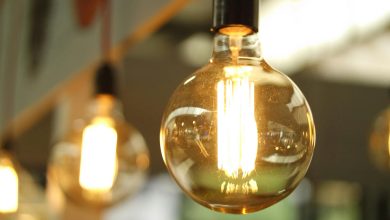
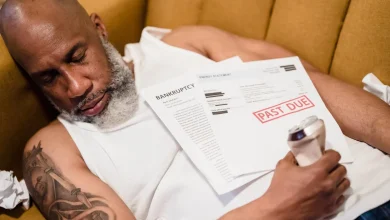


One Comment